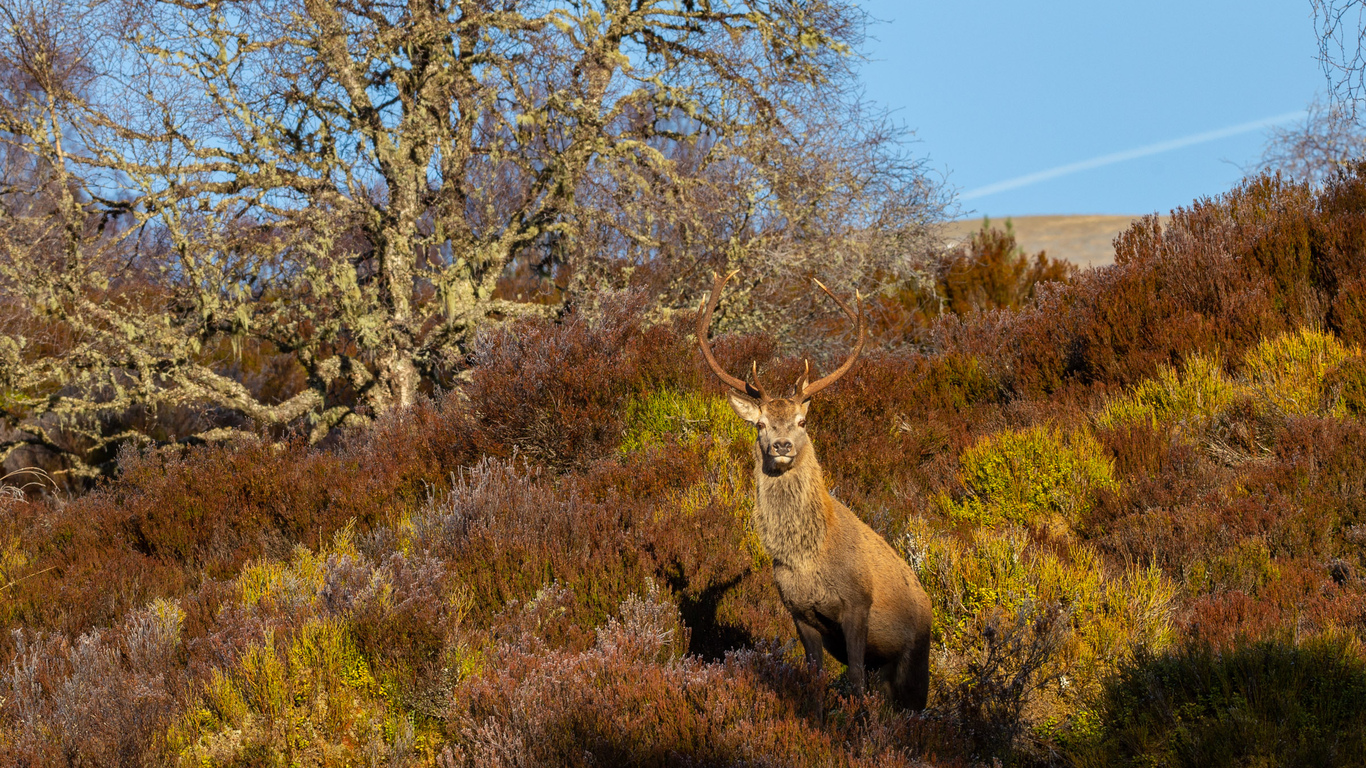Deer management
We manage deer numbers to protect the 150 million young trees that are at risk of deer damage in our forests. Deer management also helps us to reduce the impacts of climate change, protect other wildlife and supply sustainable wild venison.

Why we manage deer levels
Deer numbers are too high and growing
We estimate there are now over 1 million deer in Scotland. This is double the number there were in 1990. It is widely accepted there should only be 2-7 deer per square kilometre. However, there are currently 4-64 per square kilometre on the land we manage.
When deer levels are too high, there is the potential for disease to spread more quickly between animals. Some deer will also starve if others have eaten all the available food. As deer have no natural predators in Scotland, we must step in to reduce deer numbers ourselves.
Deer can damage woodlands
Deer can strip bark from trees, making them prone to disease. The more trees stripped, the faster a disease can spread, causing large numbers of trees to die.
Deer will also eat young trees, killing them before they’ve had a chance to grow. By managing deer numbers, we can protect more of the 150 million young trees across our forests.
Large numbers of deer can also trample the ground. This not only kills plants, but stops them from re-growing as the soils compact.
Deer can impact our work to combat climate change
We are planting trees and restoring peatlands to help capture carbon from the atmosphere. This will help Scotland reduce its impact on the climate. However, carbon is release back into the atmosphere when trees are damaged and die. Carbon is also released when peatland is eroded by large numbers of deer. Controlling deer numbers will help us meet Scotland’s climate commitments.
To protect wildlife
Scotland's forests are home to a huge number of species. Many are protected by law. These other plants and animals rely on food and shelter that can easily be damaged or destroyed by deer. If deer numbers are too high, they can destroy habitats entirely.
Improving public safety
Ticks are small insects that usually feed on sheep and deer. They can also feed on humans, sometimes passing on Lyme disease. As deer numbers rise, tick numbers also rise. Carried by the deer, they also spread further and quicker around the country, increasing the risk to humans.
There has also been an increase in vehicle collisions involving deer. This doesn’t just mean cars hitting deer, but also those that crash having swerved to avoid deer. Collisions can cause injury, even death, to both the deer and people in the vehicle. The number of recorded collisions in Scotland rose from 1,135 in 2008 to 2,006 in 2017. However, there have been many more that weren’t recorded. It is estimated the actual number of collisions could be as high as 14,000 due to the increase in deer.
Sustainable wild venison benefits Scotland’s economy
Wild venison contributes to Scotland’s high quality food and drink sector, at both home and abroad. It is one of the healthiest meats available. It has an extremely low environmental footprint too. It also helps support hundreds of jobs in rural communities.
97% of the deer culled by Forestry and Land Scotland is sold as venison. And the money we earn is invested back into protecting Scotland’s national forests and land.
How we manage deer levels
Planning our forests for deer
Our Deer Management Teams provide advice on deer behaviour and welfare when we design our forests. They recommend features such as protective fencing and deer glades. They might comment on suitable tree species to plant too. All of this helps balance the protection of growing trees with providing land for deer to roam.
Using data and evidence
We use factual data to make our decisions when it comes to deer management. This can include:
- habitat impact assessments
- inspecting tree damage
- dung counts
- deer counts
Our surveyors are also trained to tell the difference between the impacts of other animals and those caused by deer. This helps us ensure culls are set to a minimal level.
Working with others
We work closely with deer management groups, land owners, local residents and partners. This allows us to fully understand both the positive and negative impacts deer can have on an area. We also encourage local people to have their say on our plans through public consultations.
Responsible culling
Only once we have seen the evidence and spoken with everyone involved, do we set cull targets. These targets aim to return deer numbers to a sustainable level. This ensures the remaining deer can live healthy lives without causing too much damage to their habitats. We only employ highly trained and experienced Wildlife Rangers and contractors to cull deer in our forests.
Working to the highest standards
We aim to meet the highest environmental, sustainability and safety standards. We follow the guidance set out in the UK Woodland Assurance Scheme, Scottish Quality Wild Venison and the Code of Practice on Deer Management.
All of our Wildlife Rangers and deer contractors:
- hold Deer Management Qualifications, Deer Stalking Certificates 1 and 2.
- are registered as ‘Fit and Competent’ by NatureScot, the body responsible for the sustainable management of wild deer species in Scotland
- hold Food Standards Scotland recognised ‘Trained Hunter’ status
- work to Scottish Quality Wild Venison assured standards